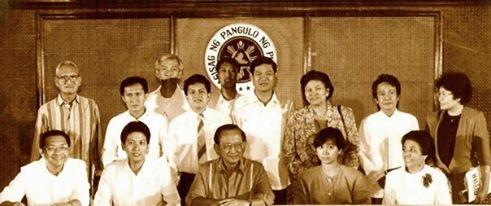Journalist, former broadcast executive Rod T. Reyes writes '30'

His exploits as a reporter who infiltrated a drug den and went on to give a face and feel of the illegal drug underworld in Malabon in the early 1960s is one story that has made a legend out of Rod T. Reyes.
The multi-awarded journalist, broadcast executive and press secretary to two presidents passed away Thursday night at the Asian Hospital in Alabang, Muntinlupa CIty. He was 80.
News of his passing initially spread on the social networking site Facebook when his long-time colleague in the Manila Standard and the Office of the Press Secretary, George Reyes, posted the sad announcement.
"I was told by a friend a few minutes ago that former Press Secretary Rod Reyes, my boss in the old Manila Standard, passed away this evening. He was earlier rushed to the Asian Hospital where he died," Reyes posted on his Facebook account.
Joel Egco, president of the National Press Club, also announced Reyes' passing on Facebook, quoting an information relayed to him by former Standard reporter Lolit Acosta.
His remains will be taken for public viewing to the Manila Memorial Park in Parañaque City, opposite the Fourth Estate Subdivision where newsmen of old managed to build their homes. Interment is scheduled on Monday.
Legendary expose
Reyes -- also known as RTR -- was a reporter at the pre-Martial Law Manila Times where his undercover work that resulted in a special report that exposed the illegal drugs and criminal underworld network in Malabon.
Pretending to be a heroin addict who frequents the drug den fronted by a barber shop, Reyes eavesdropped on conversations and transactions made by pushers, ex-convicts, robbers and fugitives.
“All the while, I was listening and half-opening my eyes. From their conversations, I learned that all the hangers-on at the den were either ex-convicts or men in hiding wanted for some offense or another. One was flashing a warrant for his arrest for serious physical injuries. Another recalled how he allowed himself to be ‘used’ in an abnormal sex act inside Muntinlupa. Still another recounted how he was nabbed for vagrancy at the South Harbor. I learned that the place was not only a dope den, but a thieves’ hideout. The young addicts stole, snatched, picked pockets and robbed people just to satisfy their craving for dope. Many are members of the notorious Bahala Na gang. There were other things I learned as I sat sleepy-eyed inside the damp den. I found out that to camouflage their drunken appearance, the dope addicts drink beer — but not more than a bottle — to give them alcoholic breath. (Heroin and alcohol don’t mix. Anyone who takes both at the same time blacks out),” he said in a newspaper interview.
Authorities raided the drug den following the publication of his expose.
Reyes went on to win a Journalist of the Year Award and was given a special citation by President Carlos Garcia. He was also named as one of the Ten Outstanding Young Men among other awards and citations.
His exploits were made into a film in the late 1970s. Titled 'Sa Piling ng mga Sugapa,' the film directed by Gil Portes had actor Mat Ranillo III playing Reyes' character. The film also starred actors Bembol Roco and Chanda Romero.
From the Times, Reyes moved to pre-Martial Law Manila Chronicle and was later transferred to sister company, ABS-CBN where he served as executive vice president.
He was also once general manager of GMA-7.
Reyes was in the Cabinet of Presidents Fidel Ramos and Joseph Estrada as press secretary.



